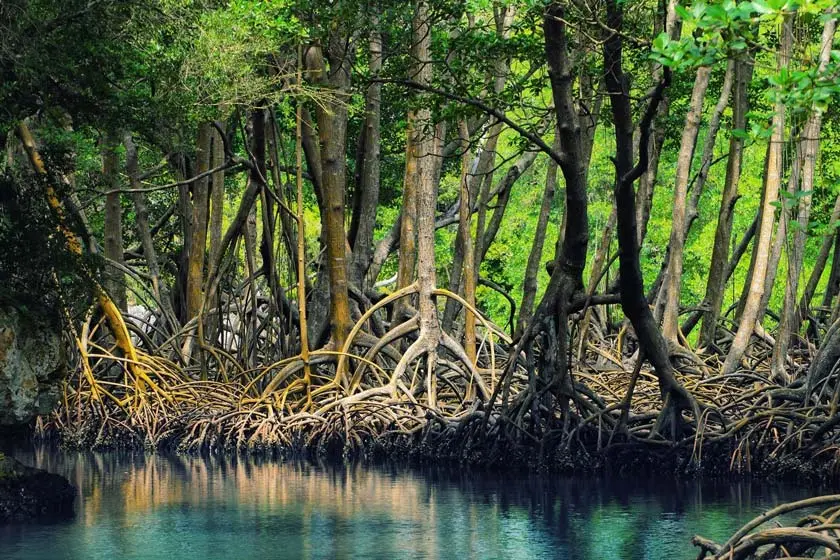
The mangrove forest on Qeshm Island is a true testament to nature’s resilience and adaptation. These salt-tolerant trees have evolved to thrive in an environment where the water salinity fluctuates dramatically with the tides. During high tide, the mangrove roots are submerged in saltwater, and during low tide, they are exposed to the air, revealing intricate root systems that form a maze-like network across the muddy terrain.
One of the unique features of Qeshm Island’s mangrove forest is the creation of tidal creeks and channels that crisscross through the forest. These waterways act as a nursery for various marine species, offering them protection from predators and providing abundant food sources. It also allows local fishermen to navigate and fish within the forest, promoting sustainable fishing practices.
Check Qeshm island tours and travel packages
The ecosystem of the mangrove forest is incredibly diverse, supporting a rich array of plant and animal species. Apart from the Avicennia marina mangroves, other mangrove species like Rhizophora and Ceriops can also be found in certain areas. These trees serve as the foundation of a complex food web, providing habitat and sustenance for numerous creatures.
Birdwatchers and ornithologists will find the mangrove forest on Qeshm Island to be a paradise. The area serves as a crucial stopover for migratory birds, providing them with a resting place during their long journeys between continents. Flamingos, herons, egrets, and various other bird species can be spotted here, making it a prime location for birdwatching enthusiasts.
The forest is not only a refuge for birds but also a breeding ground for several fish species, crabs, and other aquatic organisms. As a result, it plays a vital role in the replenishment of fish populations in the Persian Gulf, supporting the livelihoods of coastal communities that depend on fishing.
Furthermore, the mangrove forest has considerable ecological importance. It acts as a natural buffer against coastal erosion and protects the island’s shoreline from the impact of storms and tsunamis. The dense root systems of the mangroves stabilize sediments, reduce wave energy, and trap debris, making them an invaluable line of defense for the island’s coastal communities and infrastructure.
Given its ecological significance, the mangrove forest has attracted attention from researchers and environmentalists alike. Efforts are being made to study and understand the ecosystem’s dynamics better, implement conservation strategies, and raise awareness about the importance of preserving this delicate habitat.
For tourists, visiting the mangrove forest is a captivating experience. Guided boat tours take visitors deep into the heart of the forest, offering a unique opportunity to witness the lush greenery, hear the calls of the diverse birdlife, and feel a profound sense of connection with nature. Some areas of the forest are accessible on foot during low tide, where visitors can walk among the mangrove trees, discovering the intricate beauty of this unique ecosystem up close.
The local community also plays a vital role in the preservation of the mangrove forest. Sustainable eco-tourism initiatives have been developed, which not only offer visitors a chance to experience the natural wonder but also provide economic benefits to the local people. These initiatives promote responsible tourism practices that minimize environmental impact while contributing to the conservation efforts. You can visit mangrove forest on Qeshm Island by local tourist guide in Qeshm island.
The mangrove forest on Qeshm Island stands as a magnificent testament to nature’s ingenuity and the importance of preserving biodiversity. Its unique ecosystem, rich with a variety of flora and fauna, offers an unforgettable experience for travelers seeking to immerse themselves in the wonders of the natural world. As we continue to appreciate and protect this precious habitat, future generations will have the privilege of exploring and cherishing this extraordinary corner of Iran’s natural heritage.

Leave a Reply